Submitted Review
‘The View from Here: A Celebration of Western Australian Art’
The form gracefully balances to support itself, finding an audacious corporeal equilibrium.
As a child in the 1980s I spent what felt like interminable hours lolling around on the viewing lounges at the Art Gallery of WA (AGWA), waiting for my parents to hurry up. There was something however – or rather, someone – that always, scintillatingly, captured my attention: the monumental sculpture of a woman towering above, her body just-contained by her vibrant floral dress. Black Beauty (Nana Series) (1968) by the French artist Niki de Saint Phalle positioned womanhood as imminently physical, lavishly taking up space, a force of power.
In 2021, young visitors to AGWA too are greeted by an irrepressibly physical female force. Located in the foyer, Tarryn Gill’s Limber (2) (2020), is the first artwork to greet the viewer upon entering the newly-renovated gallery. The sculpture is part of an exhibition of artworks by 200 Western Australian artists from right across the state, that spreads throughout the building, and functions to reveal – floor, by floor – constellations of current practice.
Characteristic of Gill’s large soft sculptures, Limber (2) (2020) is hand-stitched, with disparate bodily parts sewn together to form a composite structure. Limbs, torso and buttocks are encased in a democratising latte-coloured Lycra, elongating and contorting to form shapes that reference the formal postures of dance. Fleshy hands take the form of feet; toes stretch out like knobbly fingers. At the form’s centre, pliable skin-rolls frame a set of peering reptilian eyes keeping resolute watch. The form gracefully balances to support itself, finding an audacious corporeal equilibrium – spreading out to extend, flex and point; re-casting the monstrous femme as tensile and potently autonomous.
Many of the works in the exhibition engage with concepts of the impact of historicity upon the present. A collection of works by living Aboriginal artists from across the state includes the neon-sound sculpture by Badimia/Yued artist Amanda Bell From our lips, mouths, throats and belly (2021), a proclamation of a single Noongar word – Moordij (good/awesome) in flamingo-pink neon. Audio stories emitting from the work collected from female Elders from Bell’s community – voice personal meanings of the expression – articulating a lived resilience. The work functions to tenderly probe a dialogue about the significance and tenacity of language.
Eveline Kotai’s Looking Out/Back/In (2021) is an interactive installation that directly responds to the Bauhaus-informed Brutalist architecture of the 1979 AGWA gallery – affording a complex referential exploration of its design provenance, as mediated through time. Within an enveloping gallery space punctuated by concrete pylons, soft three-dimensional geometric shapes in a Late Modernist palette, pile and scatter for visitors to select and build their own structures. On the wall is Skyline/Timeline (2021), a large black-and-white drawing reproducing a 1979 photograph of the very room. It is only upon moving closer that the representational image becomes unfastened; abstracted into small squares – the gridded construction of intricate, textural collaged components apparent. This dynamism – a reawakening of history to both review and rework it – powerfully grounds Kotai’s reflective installation.
Up above, at the gallery’s inaugurally opened rooftop – cited as the original intention of the building’s architect Charles Sierakowski – is a permanent work by Minang/Wardandi/Bibbulmun artist Christopher Pease. Targets (2020) is an ambitious 34 x 5 metre painting and light work that structurally wraps its way around the rooftop’s exterior wall. The work is an interpretation of a 1827 drawing by British colonial artist Frederick Garling (held in the AGWA collection) of the Derbarl Yerrigan (Swan River), at the time of Western Australia’s first settlement. Noongar people have been removed from this landscape – instead, two British subjects, one armed, dressed in buttoned-up regalia stand jauntily, conversing, incongruously placed upon the land. Other invaders have been added by Pease to the original image – a herd of white rabbits, and a bull; that too, stand upon, unintegrated within Noongar Country. Remnants of a camp have been added, starkly indicating the rightful, dispossessed, owners of this unceded panorama. Large targets pierced with holes form a pattern across the work, gesturing to viewing methods; and the loaded perspectives implicit within the historical record.
Providing multiple entry points to work by local Western Australian artists – mirrored by the physical structuring of the works across gallery floors – the exhibition gestures to a tip of an iceberg of local work; beginning a conversation about the diversity of practice existing across this widely spanning state.
@artgallerywa
@tarryngill
@evelinekotai
@moorditj_manda
@chris_pease
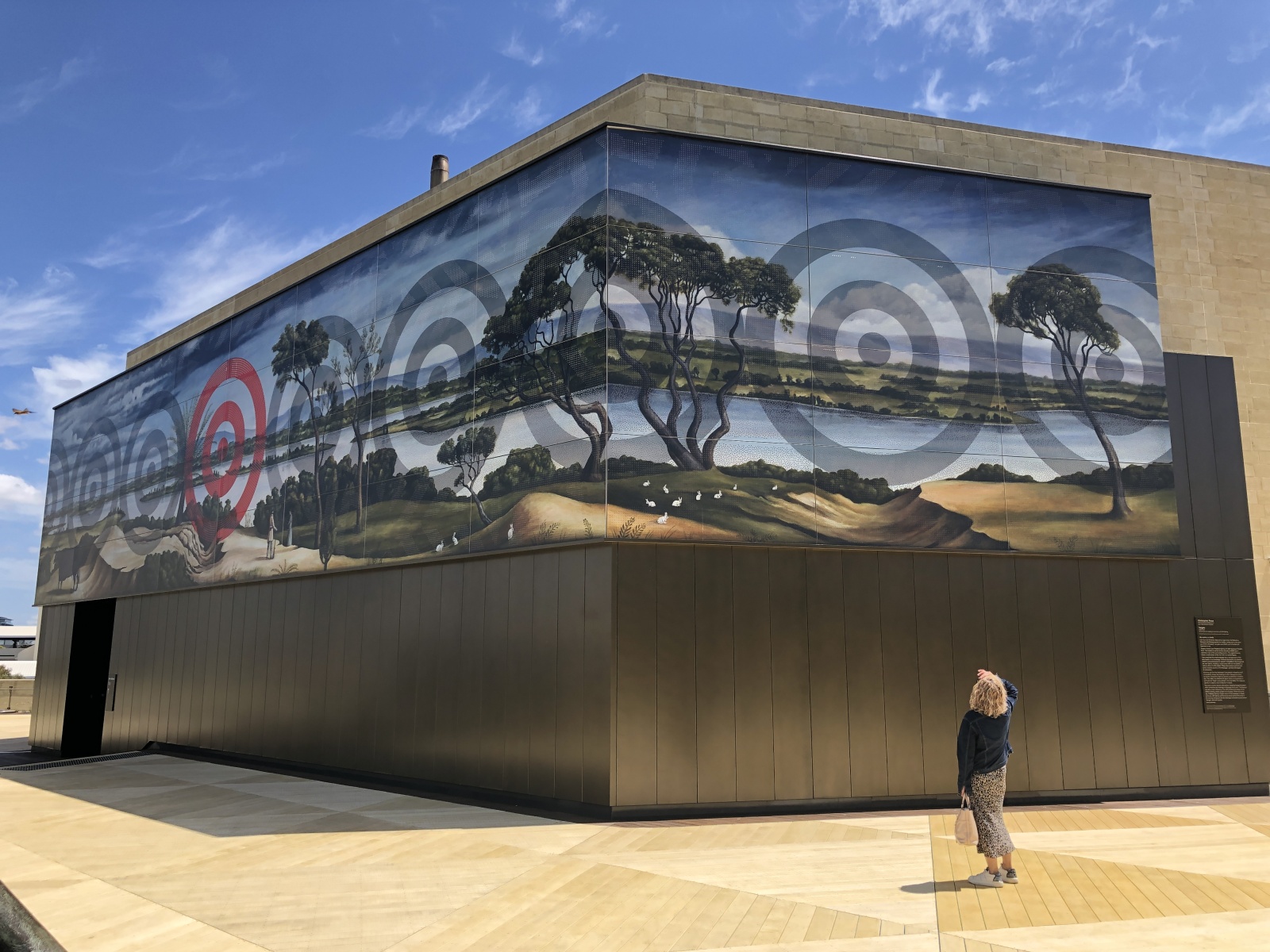
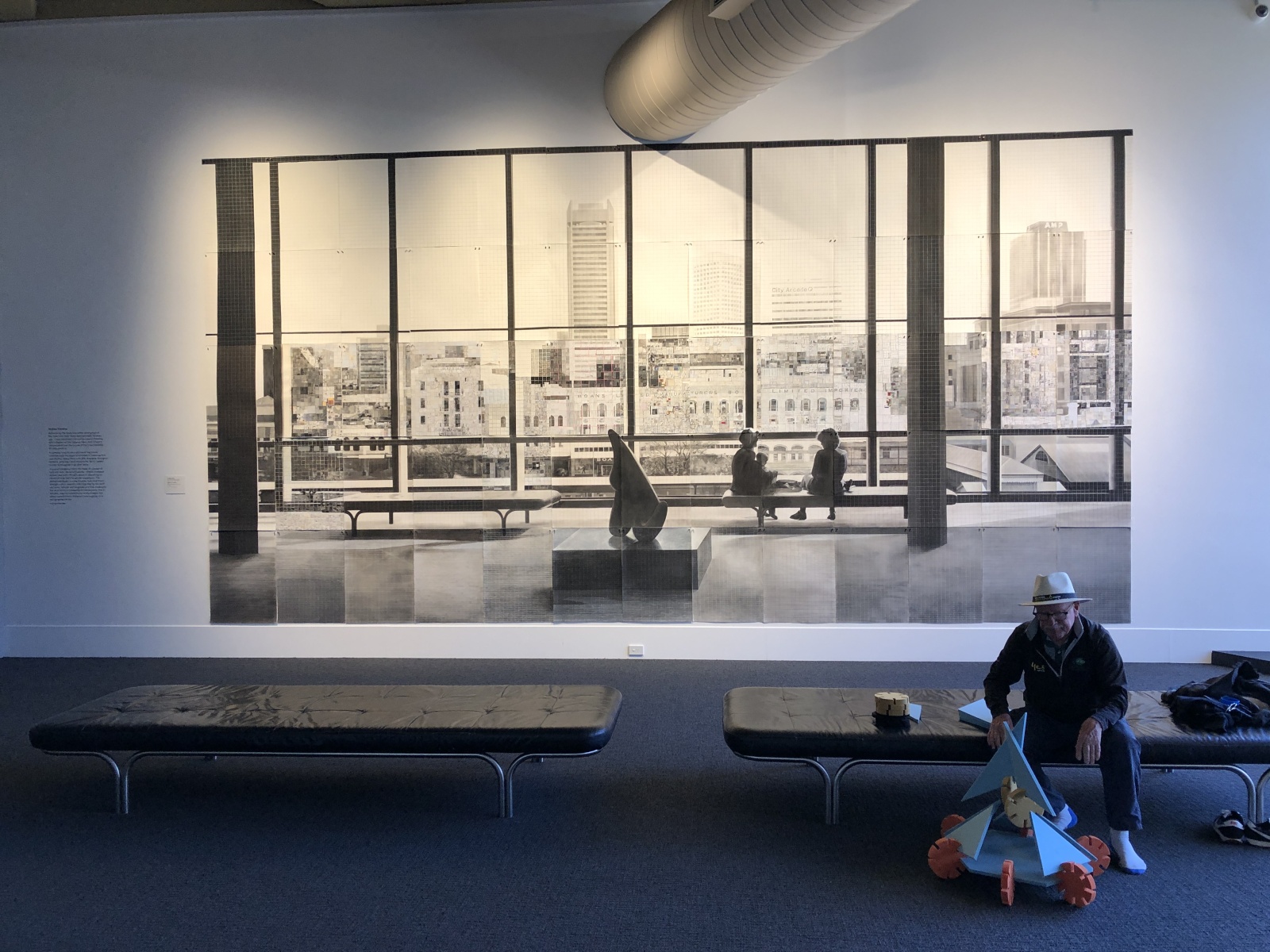
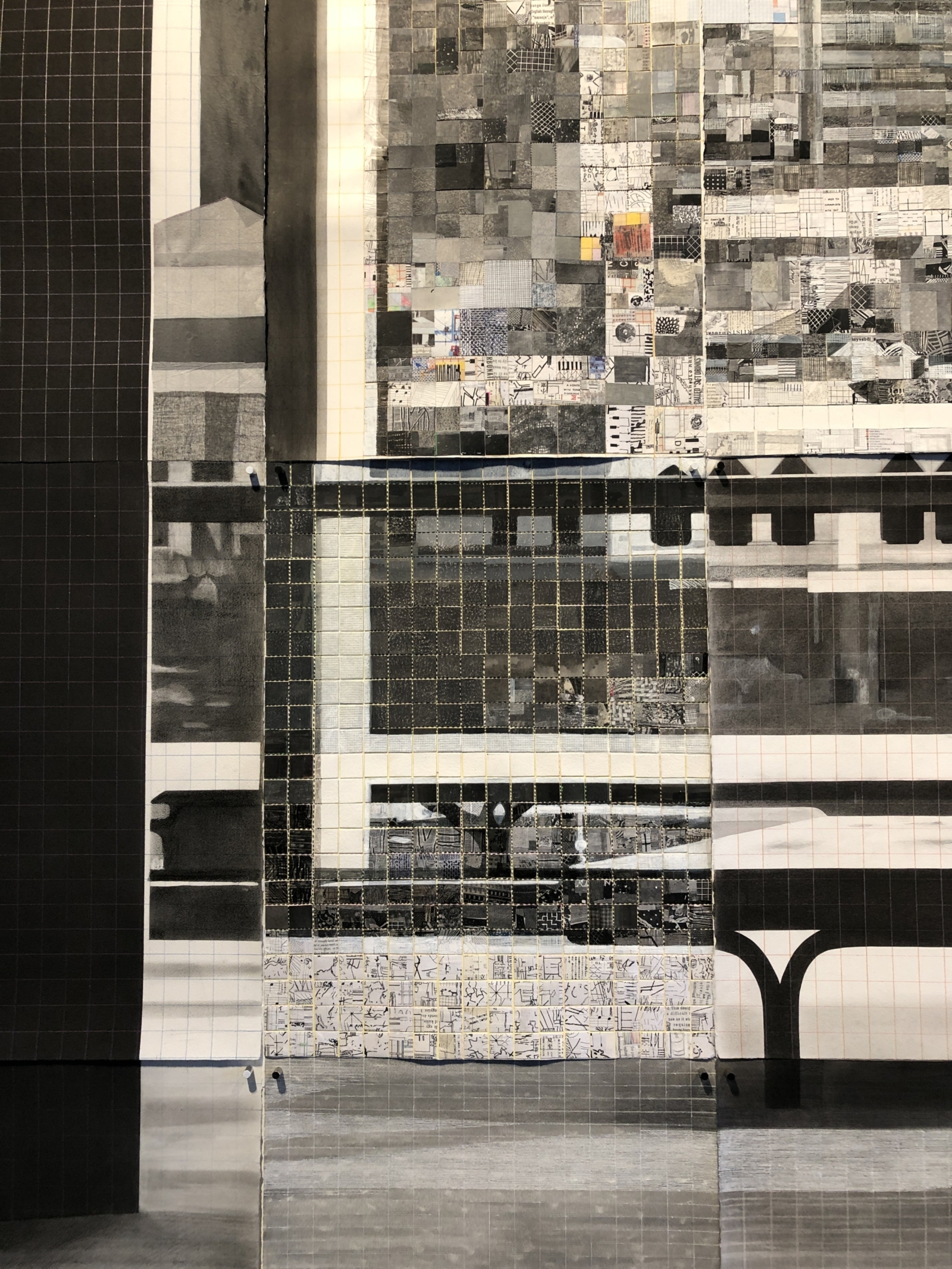
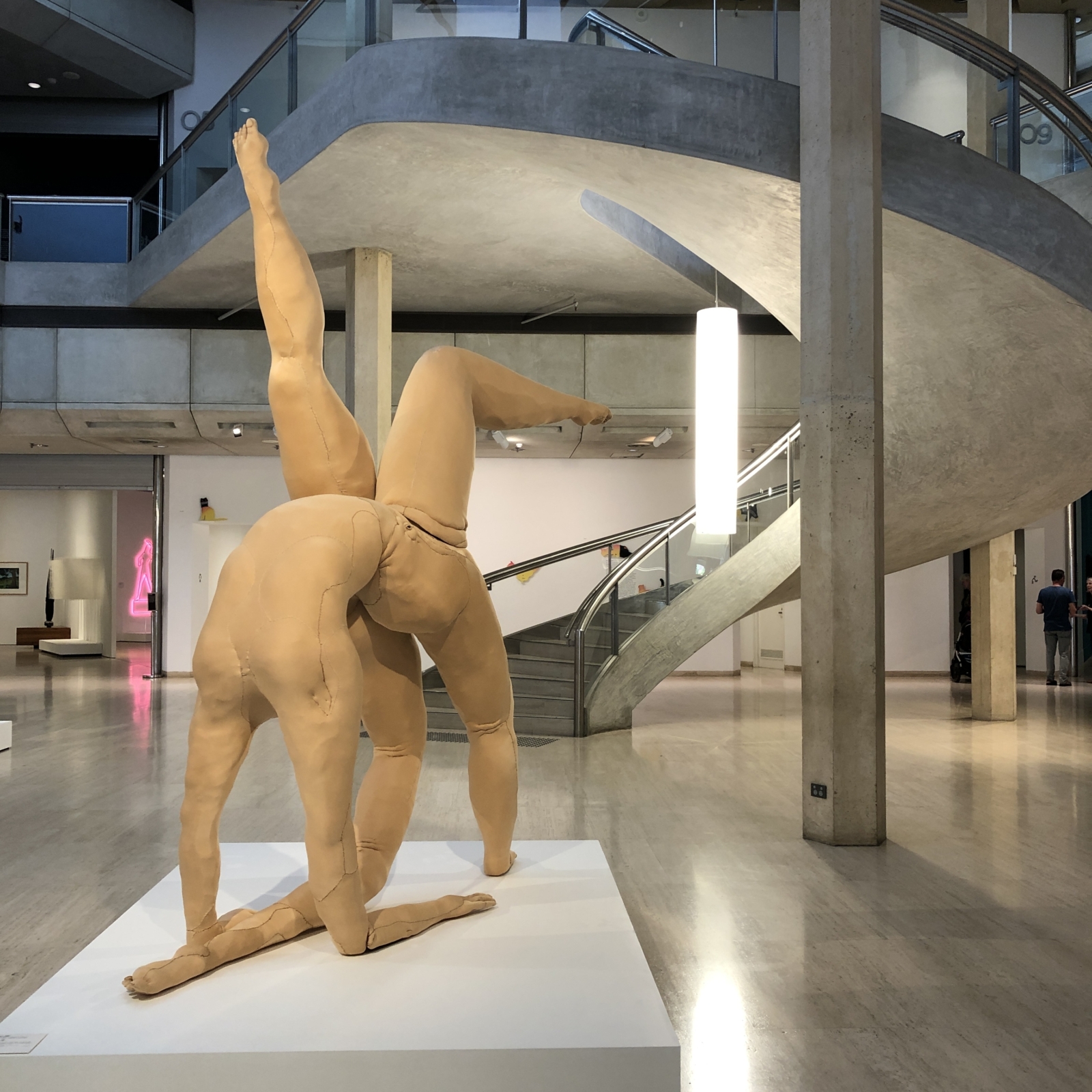
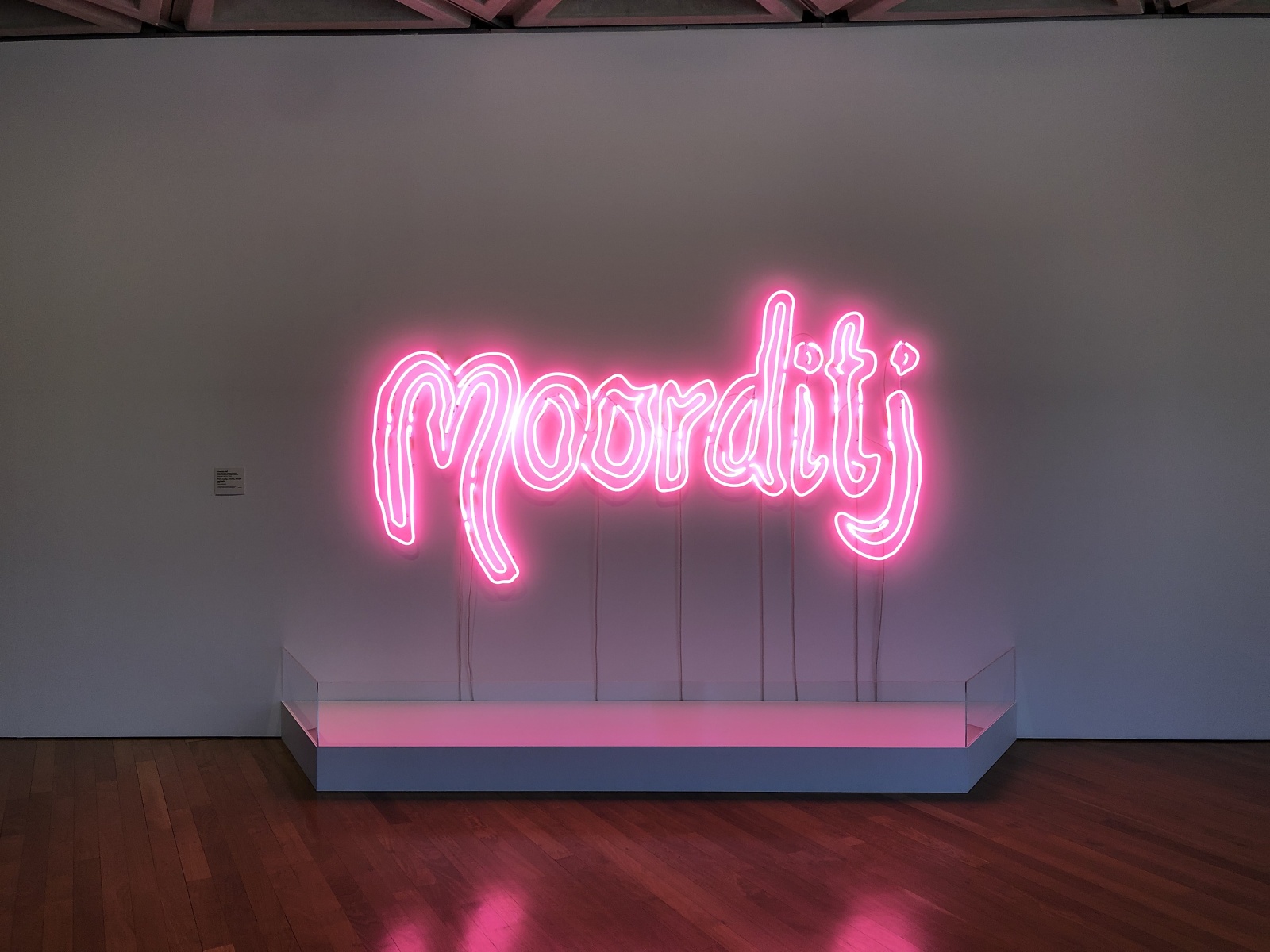
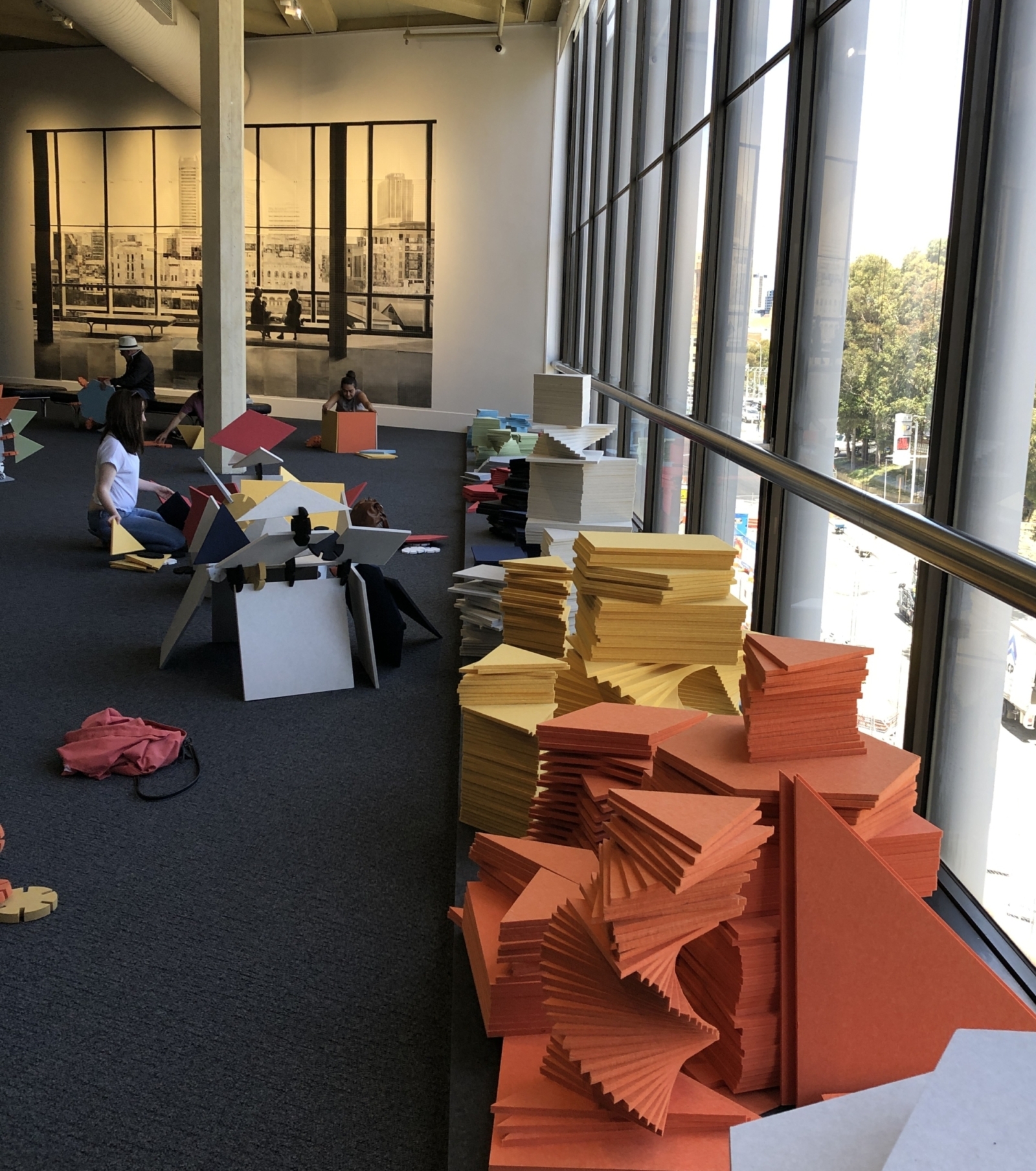

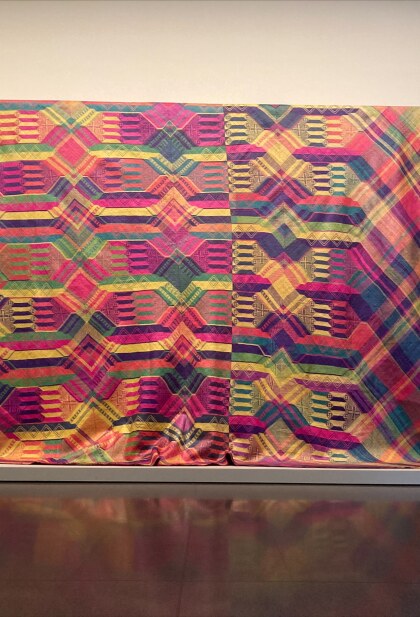
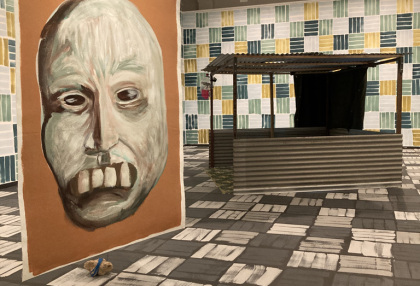
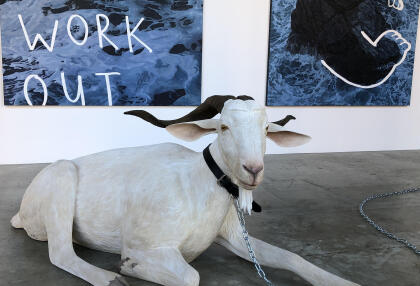
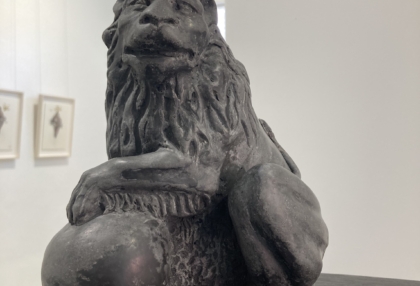
No Comments